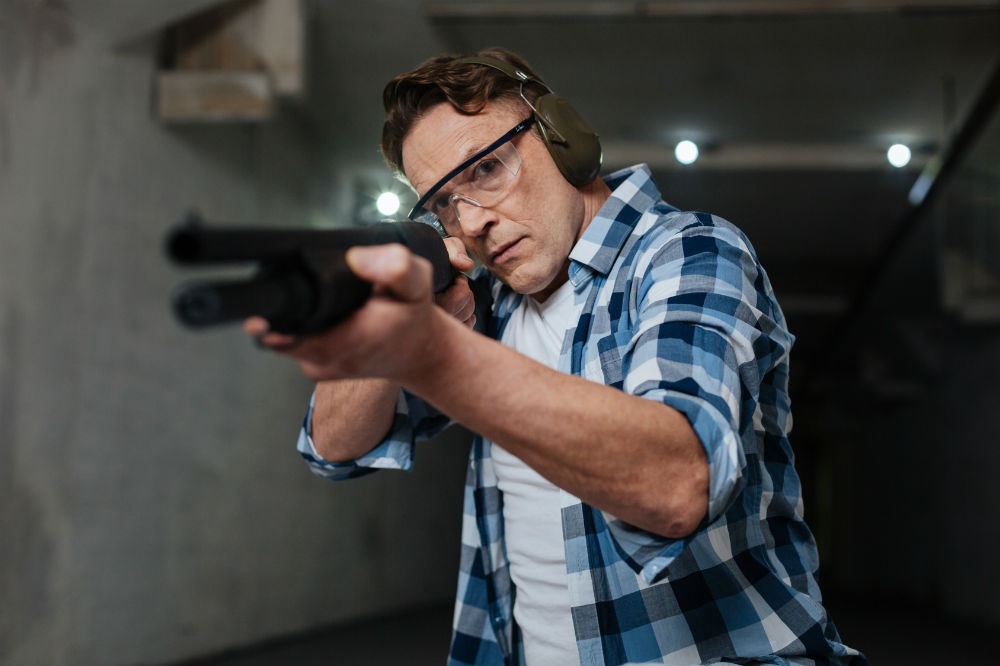
When using a firearm, eye protection is imperative; shooters have to wear them whether they are in the backwoods, at work, the field or at a shooting range. All guns or weapons possess a particular amount of recoil and most shooting activities happen out of doors where factors like sun, dust and the wind can have a profound impact while shooting, and can lead to eye conditions and vision problems without the use of proper eye gear.
You may have heard about shooters using shooting glasses or safety glasses but are these items the same? Personal preference is still the answer behind the shooting glasses vs. safety glasses debate, but if you are not that sure what to use, this article will further explain what you need to know about the subject.
Proper eye protection makes excellent sense and is always necessary while shooting on the range or during organized competitions. There are range masters who permit shooters to don any kind of eyewear they feel like using; however, there are places where safety standards are meticulously observed.
Contoured, basic non-prescription sports goggles are also accepted if your eyes do not need correction, or in case you wear contact lenses. These types of goggles often include a moderate wrap all over the face, which keeps out dust and wind.
People who have worked in places like factories wear safety glasses; however, there is a glaring difference between the two. To further get into the shooting glasses vs. safety glasses matter, shooters should know that safety glasses are made to prevent debris from getting into the eyes of the wearer.
Meanwhile, shooting glasses comply with military standards for ballistic resistance testing and ANSI standards for high-velocity impacts. Furthermore, safety glasses are intended for use in industrial and heavy-duty occupations and not really for shooting; however, many companies often produce both kinds of glasses.
Complete protection is not all-inclusive for safety glasses though. While wearing sunglasses makes for excellent aesthetics and style, if most of your shooting activities are usually done indoors, sunglasses or safety glasses are the last items you need.
If you usually do your shooting out of doors, then sunglasses or any shooting glasses with dark tints are recommended. Those with yellow lenses are usually a top pick among shooters since they makes targets more noticeable against the background; however, this also makes everything around you more brilliant, and using them on a particularly bright day can pose problems.
These days, many shooters opt for shooting glasses with amber or orange tints since the colors can still provide good detail, while still being functional even on the sunniest of days.
When choosing a pair of shooting glasses, you have to take a few factors into consideration. First and foremost, the lenses have to be durable and strong.
Basic reading or prescription glasses might shatter and break upon impact and the glass can hit your eyes. The most common material used for shooting glasses is polycarbonate, which is a strong, hardwearing material. A good pair has at least an ANSI Z87.1 rating.
These days, wraparound models are popular. Many prefer them compared to old-school aviator glasses since wraparounds stick closer to the face, but with a much smaller gap; hence, there is less chance of debris or dust coming in contact with your eyes.
However, with wraparound styles, there is still sufficient air circulation present to prevent fogging.
As for frames, shooting glasses often have frames that are made from either titanium or plastic. These materials are often comfortable.
Last but not least, you have to consider the color of the lenses. The color of the lens is important, as mentioned earlier.
There are a number of colors available on the market now, the most popular being amber, gray, purple and yellow. If you want to block out glare from the sun without obstructing your vision, gray or gray-green lenses are good to try.
For a more complete vision, you can try orange or yellow lenses. Cloudy days work well with amber lenses, while those with blue or purple lenses can assist wearers in recognizing a target that is settled among the trees.
Conclusion
Your eyesight is valuable and you should protect it. The argument of shooting glasses vs. safety glasses will be based on the user’s preferences.
Keep in mind that investing in a quality pair of shooting or safety glasses will be worth it in the end.
